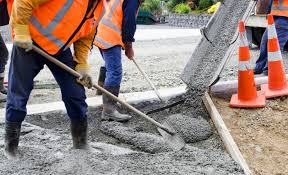Conclusion: Mastering Epoxy Applications on New Concrete
When embarking on new construction or revamping an existing concrete floor, the allure of quickly applying an epoxy coat to new concrete is understandable. However, understanding when and how to apply epoxy paint is crucial for achieving a durable, aesthetically pleasing surface. Epoxy and other resinous floor coatings are high-performance systems designed to offer outstanding durability and chemical resistance, saving facilities time and money over the long term.
The journey from mixing concrete to the application of a resinous coating system involves several critical steps. The concrete slab must first cure adequately, a process that can vary significantly based on relative humidity, how the concrete was mixed, and the specific conditions of the environment. This curing process allows moisture content to evaporate, preventing issues such as bubbling or peeling that can occur if the epoxy coat is applied too soon.
Preparing a concrete floor for epoxy involves etching, diamond grinding, or shot blasting to create a surface that epoxy paint can adhere to effectively. This preparation ensures that any sealer previously used on the concrete is removed, especially if water beads up on the surface, indicating an impermeable layer that must be mechanically abraded away.
Epoxy and resinous floor coatings, when applied in multiple layers, create a robust barrier against moisture vapor transmission, condensation, and temperature extremes—common in areas like commercial kitchens. With proper preparation, including assessing moisture levels through RH testing and ensuring adequate ventilation, the epoxy coating can cure correctly, forming an impermeable layer that enhances the slab surface’s appearance and functionality.
Decorative epoxy coatings offer a variety of colors and styles, from solid color to quartz and more, allowing customization to meet aesthetic and functional needs. High-performance epoxies can be applied to different areas of the slab, each with varying moisture levels, ensuring uniform protection and visual appeal.
The best course of action always involves waiting for the concrete to dry well before it is ready for the epoxy application. This patience ensures that the concrete steps taken—from proper preparation to the final application of the epoxy or other resinous system—result in a floor coating that prevents issues like bubble and peel, maintains its integrity, and continues to look great for years to come.
For those preparing a basement floor, garage, or any concrete surface for an epoxy application, the guidance of an experienced flooring contractor can be invaluable. Their expertise ensures that every step, from surface preparation to the final layer, is performed with precision, resulting in an epoxy concrete floor that combines aesthetic appeal with unmatched durability.
Contact us for more insights on how to use epoxy coatings effectively, ensuring your concrete surfaces are not only protected but also enhance your facility’s overall look and feel. Professional Grade Epoxy Coatings for High-Performance Epoxy Flooring (epoxyplus.com)

